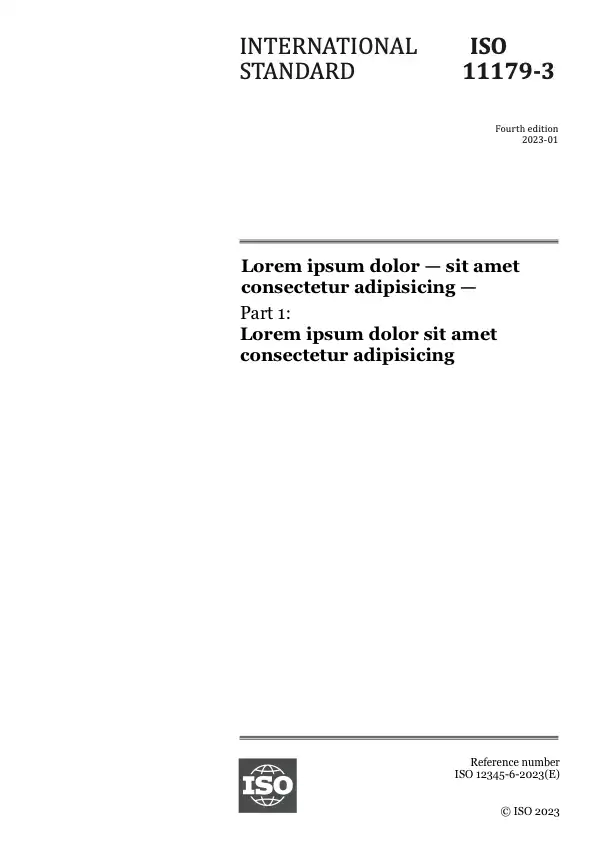Тезис
This document describes the methods for determining the activity in becquerel (Bq) of gamma‑ray emitting radionuclides in test samples by gamma-ray spectrometry. The measurements are carried out in a testing laboratory following proper sample preparation. The test samples can be solid, liquid or gaseous. Applications include:
— routine surveillance of radioactivity released from nuclear installations or from sites discharging enhanced levels of naturally occurring radioactive materials;
— contributing to determining the evolution of radioactivity in the environment;
— investigating accident and incident situations, in order to plan remedial actions and monitor their effectiveness;
— assessment of potentially contaminated waste materials from nuclear decommissioning activities;
— surveillance of radioactive contamination in media such as soils, foodstuffs, potable water, groundwaters, seawater or sewage sludge;
— measurements for estimating the intake (inhalation, ingestion or injection) of activity of gamma-ray emitting radionuclides in the body.
It is assumed that the user of this document has been given information on the composition of the test sample or the site. In some cases, the radionuclides for analysis have also been specified if characteristic limits are needed. It is also assumed that the test sample has been homogenised and is representative of the material under test.
General guidance is included for preparing the samples for measurement. However, some types of sample are to be prepared following the requirements of specific standards referred to in this document. The generic recommendations can also be useful for the measurement of gamma-ray emitters in situ.
This document includes generic advice on equipment selection (see Annex A), detectors (more detailed information is included in Annex D), and commissioning of instrumentation and method validation. Annex F summarises the influence of different measurement parameters on results for a typical gamma-ray spectrometry system. Quality control and routine maintenance are also covered, but electrical testing of the detector and pulse processing electronics is excluded. It is assumed that any data collection and analysis software used has been written and tested in accordance with relevant software standards such as ISO/IEC/IEEE 12207.
Calibration using reference sources and/or numerical methods is covered, including verification of the results. It also covers the procedure to estimate the activity content of the sample (Bq) from the spectrum.
The principles set out in this document are applicable to measurements by gamma-ray spectrometry in testing laboratories and in situ. However, the detailed requirements for in situ measurement are given in ISO 18589-7 and are outside the scope of this document.
This document covers, but is not restricted to, gamma-ray emitters which emit photons in the energy range of 5 keV to 3 000 keV. However, most of the measurements fall into the range 40 keV to 2 000 keV. The activity (Bq) ranges from the low levels (sub-Bq) found in environmental samples to activities found in accident conditions and high level radioactive wastes.
Preview
Общая информация
-
Текущий статус: ОпубликованоДата публикации: 2019-06Этап: Систематический пересмотр между-народного стандарта [90.20]
-
Версия: 1
-
Технический комитет :ISO/TC 85/SC 2ICS :13.280
- RSS обновления
Жизненный цикл
-
Сейчас
ОпубликованоISO 20042:2019
Стандарт, который пересматривается каждые 5 лет
Этап: 90.20 (Hа стадии пересмотра)-
00
Предварительная стадия
-
10
Стадия, связанная с внесением предложения
-
20
Подготовительная стадия
-
30
Стадия, связанная с подготовкой проекта комитета
-
40
Стадия, связанная с рассмотрением проекта международного стандарта
-
50
Стадия, на которой осуществляется принятие стандарта
-
60
Стадия, на которой осуществляется публикация
-
90
Стадия пересмотра
-
95
Стадия, на которой осуществляется отмена стандарта
-
00
Появились вопросы?
Ознакомьтесь с FAQ
Часы работы:
Понедельник – пятница: 09:00-12:00, 14:00-17:00 (UTC+1)
